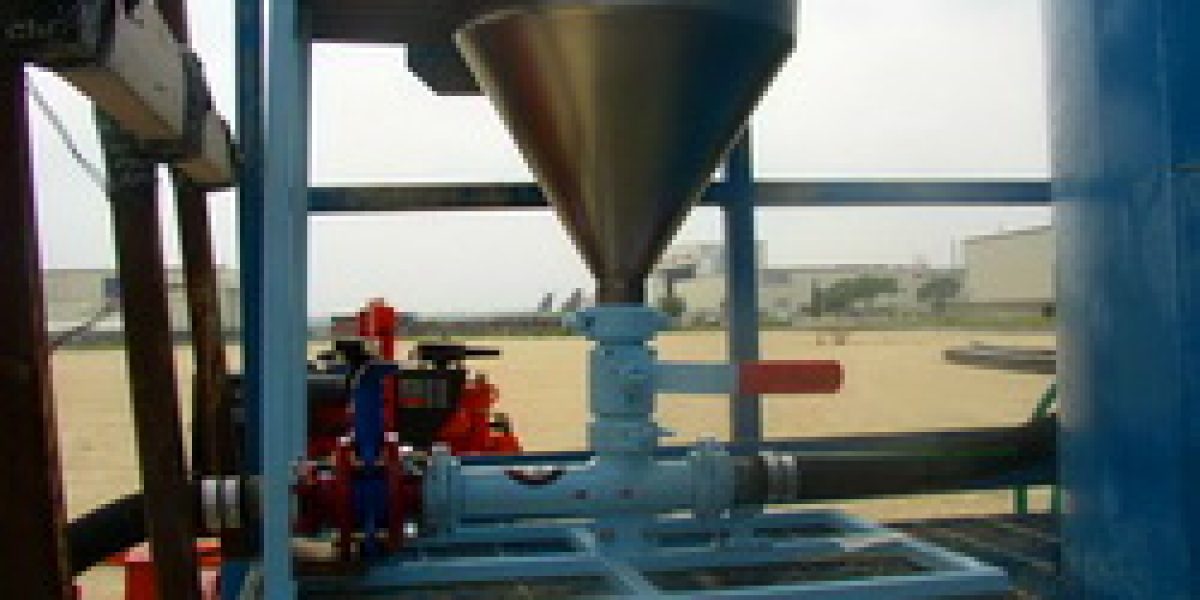As trenchless technology continues to redefine the way underground utilities are installed, methods like Horizontal Directional Drilling (HDD) and microtunneling have gained widespread adoption for their ability to minimize surface disruption while achieving high precision underground. However, these methods rely heavily on the performance and reliability of support systems, especially fluid mixers & slurry plants.
In HDD and microtunneling, drilling fluids and slurry systems are not just auxiliary components; they are central to the success of the operation. They facilitate soil removal, stabilize the borehole, cool down cutting tools, and ensure accurate alignment. Without well-designed and efficiently operated fluid mixers & slurry plants, even the most advanced tunneling equipment can fall short.
The Role of Drilling Fluids and Slurry in Trenchless Operations
Before understanding the equipment involved, it’s essential to appreciate the function of drilling fluids and slurry in trenchless construction:
-
Borehole Stabilization: Drilling fluids provide hydrostatic pressure that helps prevent the collapse of bore walls, especially in loose or sandy soils.
-
Cuttings Transport: The mixture carries excavated material from the cutting head back to the surface for separation and disposal.
-
Cooling and Lubrication: The rotating parts of the cutting head generate friction and heat, which can damage equipment. Fluids help dissipate heat and reduce wear.
-
Directional Control: In HDD and microtunneling, fluid pressure and density influence steering mechanisms and help maintain the desired bore path.
To perform all these functions efficiently, the fluid must have the right composition and properties. This is where fluid mixers & slurry plants come into play.
What Are Fluid Mixers & Slurry Plants?
Fluid mixers & slurry plants are systems designed to prepare, maintain, and recycle drilling fluids or slurries used in trenchless construction. These plants are composed of several integrated components, including:
-
Mixing Units: Combine bentonite, polymers, and other additives with water to create a homogenous fluid with the desired viscosity and density.
-
Storage Tanks: Hold prepared slurry for continuous supply during drilling operations.
-
Centrifugal or Progressive Cavity Pumps: Circulate the fluid through the system and to the drill head.
-
Recycling Units: Separate excavated solids from used slurry so that the fluid can be reused, reducing environmental impact and cost.
In more advanced setups, the entire process is automated, allowing real-time monitoring and control of slurry characteristics.
Why They’re Critical in HDD Operations
In HDD, the bore path often extends for hundreds of meters beneath roadways, rivers, or urban infrastructure. A breakdown in fluid circulation or a poorly mixed slurry can lead to serious problems such as borehole collapse, stuck pipe, or frac-outs (unintended surface returns).
Properly functioning fluid mixers & slurry plants ensure:
-
Consistent Fluid Properties: Viscosity, density, and pH levels must be maintained within narrow ranges to avoid drilling instability.
-
Continuous Operation: A steady supply of clean, conditioned drilling fluid is essential to keep the process moving and avoid downtime.
-
Efficient Spoil Removal: As the drill progresses, it creates a considerable volume of excavated material. Slurry systems efficiently transport these cuttings to the surface, where they can be separated and disposed of.
In large-scale HDD projects, the efficiency of the mixing and recycling system directly affects the productivity and cost-effectiveness of the job.
Importance in Microtunneling Applications
Microtunneling is often used in high-precision installations, such as gravity-fed sewer lines, where grade control is critical. Unlike HDD, which is steerable, microtunneling relies on a laser-guided boring machine that follows a rigid pipe being jacked from the launch shaft.
Fluid mixers & slurry plants play a pivotal role in:
-
Face Pressure Control: The slurry applies pressure at the cutting face, which is crucial for preventing over-excavation or ground loss, especially in unstable soils.
-
Lubrication of the Pipe Jacking Process: The annular space around the jacked pipe must be filled with bentonite slurry to reduce friction and allow smooth advancement.
-
Accuracy and Grade Tolerance: The even distribution of pressure and controlled flow rates contribute to maintaining the precise line and level required in microtunneling.
When working under sensitive structures, such as railways or historic buildings, the precision enabled by these systems can prevent costly structural damage.
Environmental and Economic Benefits
Efficient fluid mixers & slurry plants also bring significant environmental and financial advantages to HDD and microtunneling projects:
-
Reduced Waste: By recycling slurry and separating solids, these systems reduce the need for constant replenishment and minimize disposal costs.
-
Lower Water Consumption: Reuse of processed fluid lessens water usage, a key sustainability metric in construction today.
-
Regulatory Compliance: Environmental regulations often require strict controls on the disposal of drilling fluids. Modern slurry plants help contractors meet these standards.
In some regions, failing to manage drilling fluids properly can result in fines, project delays, or shutdowns. High-quality fluid management is not just a technical requirement—it’s a legal and environmental one.
Advancements in Technology
The evolution of fluid mixers & slurry plants has kept pace with the growing demands of trenchless construction. Today’s systems include:
-
Automated Monitoring: Sensors and software that track fluid properties in real time, allowing for immediate adjustments.
-
Modular Designs: Customizable configurations for different project sizes and site conditions.
-
Remote Operation: Some advanced plants allow operators to monitor and control the system remotely, improving safety and responsiveness.
These technological advancements reduce human error, improve efficiency, and enhance the overall reliability of trenchless installations.
Conclusion
In HDD and microtunneling, the focus is often on the drill or tunneling machine, but the performance of these machines is directly tied to the quality of the support systems behind them. Fluid mixers & slurry plants are not merely supporting actors; they are central to the success of trenchless operations.












